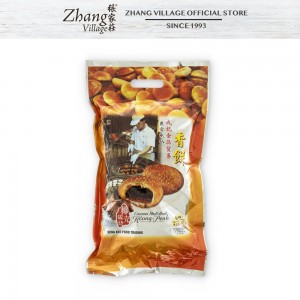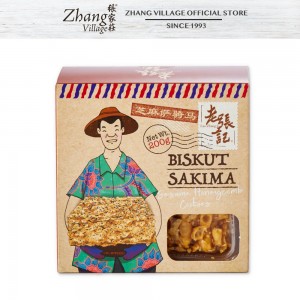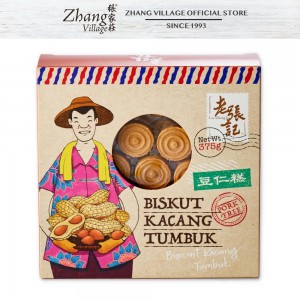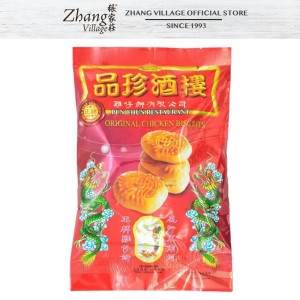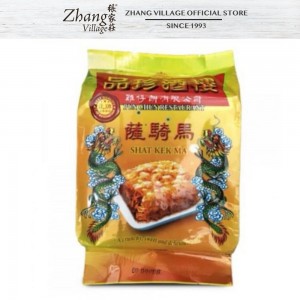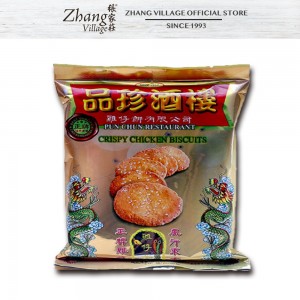马蹄酥原为唐代的宫廷食品。相传唐王李世民的原配夫人长孙皇后回家乡陕西省探亲时,携带马蹄酥作为随身礼物。乡亲们尝后赞叹不已,经皇后同意,娘家派一名心灵手巧的人,向随行御厨学制作此佳点的工艺,后来传入民间。唐代开辟闽疆,这种宫廷佳点随南下人员传入闽南。后来马来西亚的香饼除了原本的麦芽糖口味外,也陆续推出榴莲和椰糖口味等各种口味。樂記出产的原味蜜糖香饼更是添加了新鲜葱油来制作。
Heong Peah originated as a palace food in the Tang Dynasty. Legend has it that when Empress Zhangsun, the original wife of Emperor Li Shimin of the Tang Dynasty, returned to her hometown in Shaanxi Province to visit relatives, she brought Heong Peah as a personal gift. The local people were so impressed after tasting it that, with the Empress's consent, a skilled person from her family was sent to teach the imperial chefs how to make this delicacy. Later, it spread to the common people. During the Tang Dynasty, when Fujian and Jiangxi were opened up, this palace delicacy spread to southern Fujian along with the people migrating south. Later, in addition to the original maltose flavor, Malaysian pastries also introduced various flavors such as durian and coconut sugar. Loke Kee's original honey-flavored pastries even added fresh scallion oil to make them.
配料:小类路奶品砂料。榴莲果肉,水,高果糖玉米糖浆,葡萄糖浆,棕桐油•起酥油;人造奶油(棕榈油,单,双甘油脂肪酸酯,B-胡萝卜素,特丁基对笨二酚),人造黄油,食用盐,食用香精(榴莲味)。
致敏物质:本品含有麸质的谷物(小麦粉)。
Ingredients: Wheat Flour, Sugar, Durian Flesh, Water, High Fructose Corn Syrup, Glucose Syrup, Vegetable Oil (Palm Olein), Vegetable Shortening, Butter Oil Substitute Vegetable Oil (Palm Olein), Emulsifier (Mono- and Diglycerides of Fatty Acids E471), Colouring Substance (3-Carotene E160a), Antioxidant (Tert-Butylhydroquinone E319), Vegetable Margarine, Salt, Artificial Durian Flavor.
Allergy Advice:For allergens, including cereals containing gluten, see ingredients in bold.
LZJ SESAME HONEYCOMB COOKIES 200G 芝麻萨骑马
LZJ BISCUIT KACANG TUMBUK 375G 豆仁糕







